Nation’s Largest Solar Installer Celebrates 15 Years
Sunrun announced they have been in business 15 years, becoming the nation’s largest solar installer with installations in 22 states.
- 11,000 employees
- 700,000 customers served
- 5000 MW installed
- 10 employees (1/1100 the employees as Sunrun)
- 1000 customers served (1/700th the number of clients as Sunrun)
- 6.5 MW solar installed (1/1000 the installed capacity as Sunrun)
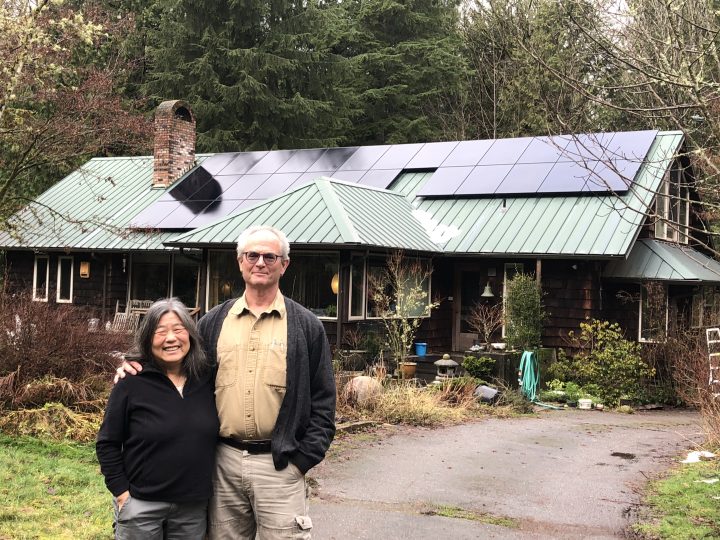
10.5 KW Sunpower Array, Bainbridge Island, WA 2019
Do Your Solar Homework and Beware of Ethically Challenged Solar Opportunists
We have been installing roof-top solar PV for our friends and neighbors on the Olympic and Kitsap Peninsulas for over 20 years. Our reputation is vital and taking care of our clients is a huge part of what makes our business fun. Solar has (finally) become popular in the mainstream, and sadly our state has attracted some scam artists. Please do you due diligence and work with someone that has your long term best interests at heart. We are working hard to install clean energy and create the world we want to live in. A recent KUOW news story exposed a few issues with some disreputable installers and is worth a 4 minute listen.

12 KW Sunpower array, Diamond Point, WA, May 2022
Why Are We Seeing So Many New Companies Promoting Solar with…”Interesting”…Claims?
Here at Power Trip Energy, we have been promoting and Installing roof-mounted solar PV arrays for 20 years. It makes a lot of sense to us, it has only gotten more attractive over time, and we pride ourselves on helping our clients and making a positive contribution to our community. Lately there have been a profusion of new companies entering the market, and their claims make us wonder if they have the same motivations we do. Our friends at Western Solar in Bellingham have been in the business as long as we have and they have built a reputation of honesty, reliability, and competence. They wrote a nice blog article and we are sharing. It is a good summary of things to look out for, written in a clear way, less emotional and more level-headed than I could have written it. “Protect yourself from Solar Scams and High Pressure Sales.”
www.westernsolarinc.com//solar-red-flags/
If you are in Whatcom County, call Western Solar. If you are in Jefferson, Clallam, or Kitsap Counties, that is what we consider home and we would love to give you straight truth, and a great solar project at a fair price.
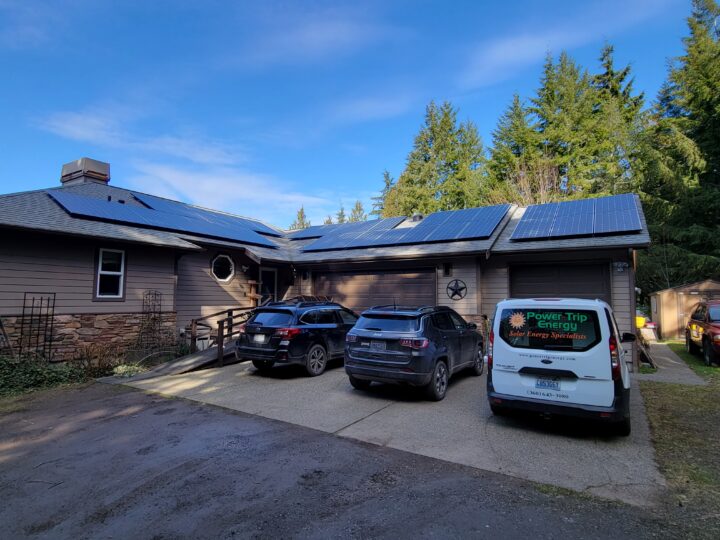
15 KW Sunpower, Seabeck, PSE Grid, Feb 2022
LG – A Global Solar Manufacturer Exits the Business
LG has been a leading brand of solar modules in the US, and less so, world-wide for over a decade now. I noticed them enter the market in 2010, along with so many new entrants that year at the Solar Power International in Los Angeles. When I saw that LG, Samsung, and Hyundai among others were making a big splash at that trade show, it was a clue that the market would be dramatically changing and growing. Through the first half of that decade we not only saw continued geometric growth of the industry, but jaw-dropping price decreases. Those price decreases helped fuel industry growth, but also herlded the failure of many good American companies that could not cut costs and survive (RIP Evergreen, UniSolar, Stirling Energy, NanoSolar, Solyndra, Day4, SpectraWatt, etc.) At that time, we had just begun our relationship with Sunpower, based in San Jose, CA, which had been in the solar industry since 1985, and has been consistently recognized as the highest efficiancy and quality.
I was surprised to see LG walk away from the solar sector since they have such a good reputation, a good product, significant market share, and some of the greatest electronics manufacturing expertise on the planet. If they can’t make good profit with all those advantages going for them, what does that say about the industry as a whole? The low cost of multiple giant Asian solar manufacturers, the difficulties produced by Chinese dumping (substantiated by the FTC, and a basis for tariffs), and the consumer expectation that solar will continue to decrease in price, have combined to create difficult market conditions for manufacturers.
The official announcement from LG cites supply chain issues, and increasing materials and logistics costs. https://www.solarpowerworldonline.com/2022/03/lgs-advice-to-u-s-installers-as-it-exits-solar-panel-manufacturing/
As recently as last year, LG was forecasting growth and continuing to commit to the sector. https://www.lg.com/global/business/solar-blog/solar-market-trend
Sunpower has been able to weather the difficulties present in this market through growth, cost-cutting, price decreases, outside investment, and various restructuring over the years. Sunpower is not the least expensive product on the market, far from it. We feel that going with the highest quality company, with a track record of reliability and consistency, is the best way to make this solar investment for your home.
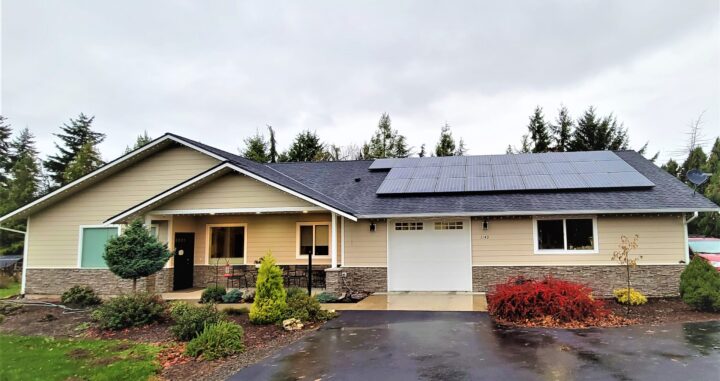
10 KW Sunpower Array, Sequim, WA, October 2021
PNNL in Washington Running Large Smart Grid Simulation
The Pacific Northwest National Lab in Richland is running a Smart Grid simulation and implementiing it on their campus and also in Spokane’s Eco District in conjunction with Avista, the electrical utility there.
In general, the ability to coordinate between the consumer’s needs and ability to provide power with distributed generation and storage, and the utilities needs and costs on the variable wholesale power market, will make the grid more efficient, cleaner, and less expensive for everyone. The study is linked below, and we view this progress as key to allowing individuals to maximize their economic returns from installing solar while having the greatest possible reduction of carbon emissions and other pollution.
PNNL Researchers are estimating consumer savings nationally as $50 Billion per year, and reducing energy output equivalent to 180 coal fired power plants. What a gross disgusting waste and what a tremendous opportunity for improvement – let’s do it!
We are hopeful for progress along these lines, especially in conjunction with Electric Vehicles. In the meanwhile, the best thing you can do is to install a grid-tied pv system on your home or business today. That will save you money now, and give your home the foundation to take best advantage of whatever energy policies are coming our way.
https://www.pnnl.gov/news-media/how-smart-electric-grid-will-power-our-future
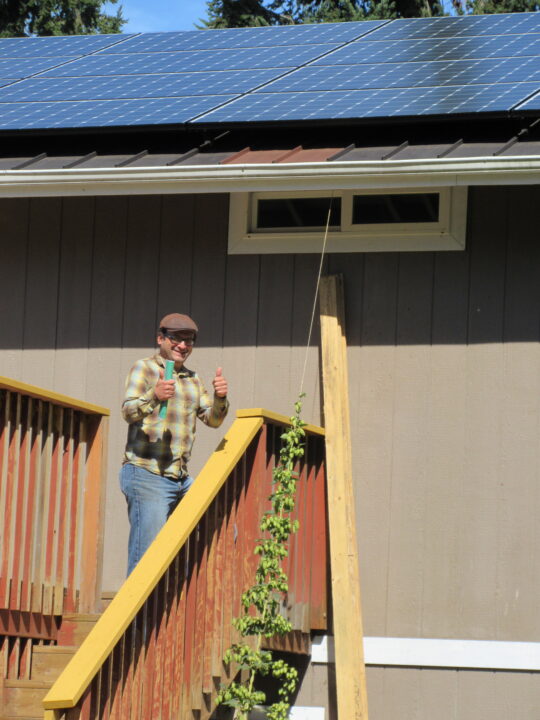
9.8 KW Sunpower PV Array, Port Hadlock, WA, Jefferson PUD Grid, Sept 2021
More Oil On Our Hands
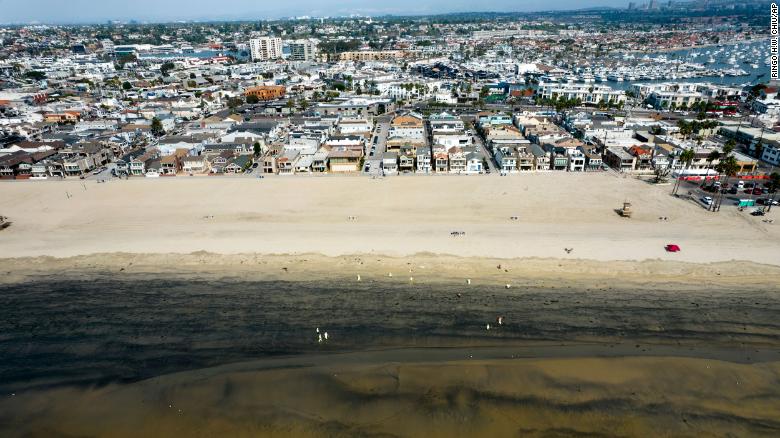
Workers in protective suits clean the contaminated beach after an oil spill in Newport Beach, California, on Wednesday, October 6, 2021.
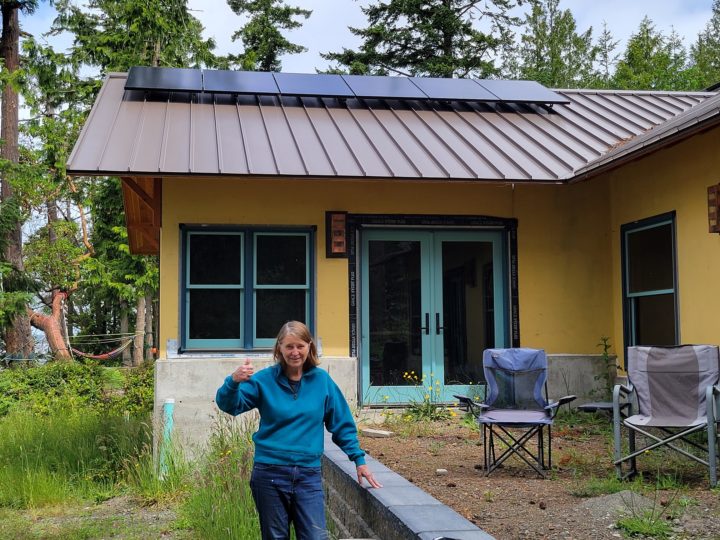
5.25 KW Sunpower Array, Nordland, September 2021
New Orleans Shows Need for Distributed Renewable Energy and Storage
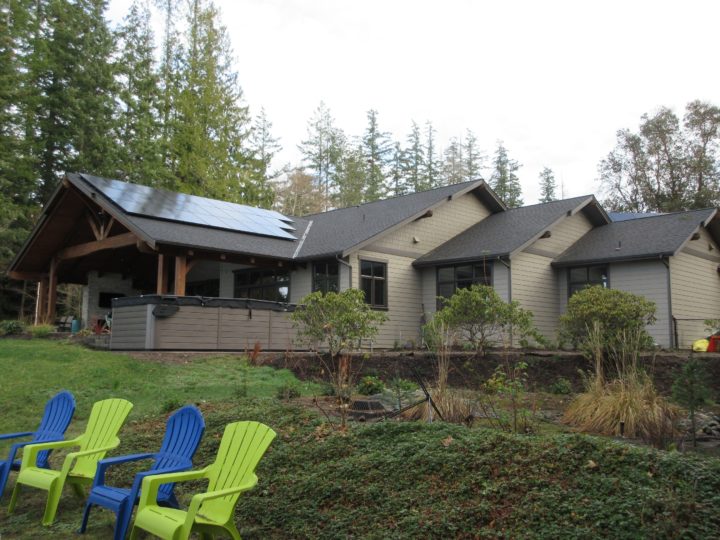
11 KW Sunpower Array, Bremerton WA, January, 2021
There Is No Moderate Response to Climate Change
David Roberts recently wrote that we will either make radical changes to shape our future, or radical changes beyond our control or ability to avoid will be visited upon us. He is a clear writer and interesting observer of climate issues, you can see his article and other work here:
https://www.canarymedia.com/articles/there-is-no-such-thing-as-moderate-climate-policy/
The only responses that accomplish what we need are rapid installation of clean electricity generation, early retirement of as many fossil fuel consuming equipment, and electrification of as much of the economy as possible. It is incumbent on each of us to analyze how we can lead fulfilling healthy lives while radically reducing our gasoline and overall energy consumption. Your quality of life does not necessarily depend on your energy consumption, and the energy your family does need can be provided with clean renewable resources.
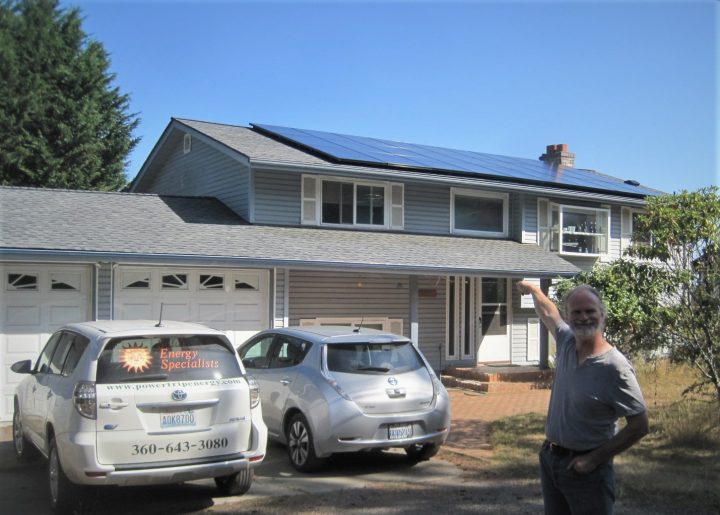
Leaf and RAV4 EV charging from 9.5 kw Sunpower solar array in the North Beach neighborhood of Port Townsend.
Solar Tours Return – Jefferson Solar Tour July 31
We are resuming our solar educational events beginning with the Jefferson Solar Tour 2021. This will be an outdoor event with an optional indoor presentation. The solar tours have traditionally been regarded as valuable events bringing updated information and the opportunity to speak with homeowners to learn about their first hand experiences with solar.
This will be a free outdoor and indoor optional in-person event at 10 am until 1 pm, starting at the Power Trip Energy building at 83 Denny Avenue in Port Townsend. Starting at 10 am will be a Spin Your Meter Backwards presentation which can be considered Solar 101 with a focus on local regulations, the state of grid-tied solar technology, and incentives. Limited refreshments will be provided, please bring your own cup. Please bike, drive electric, or carpool if you can. One or two additional homes TBD will be available for viewing in Port Townsend.
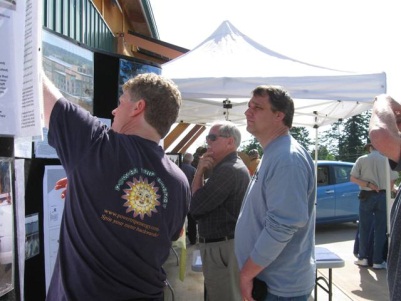

Oregon Takes a Clean Energy Policy Lead, Even Among Neighboring West Coast States
The Oregon legislature has now enacted a 100% carbon-free electricity standard by 2040, including 80% by 2030 and 90% by 2035.
This fits our simplified strategy of 1) Electrify everything, 2) Make as much clean electricity generation as quickly as possible, 3) Use that electricity as efficiently as possible, 4) decommission all carbon emitting power generation as soon as possible.
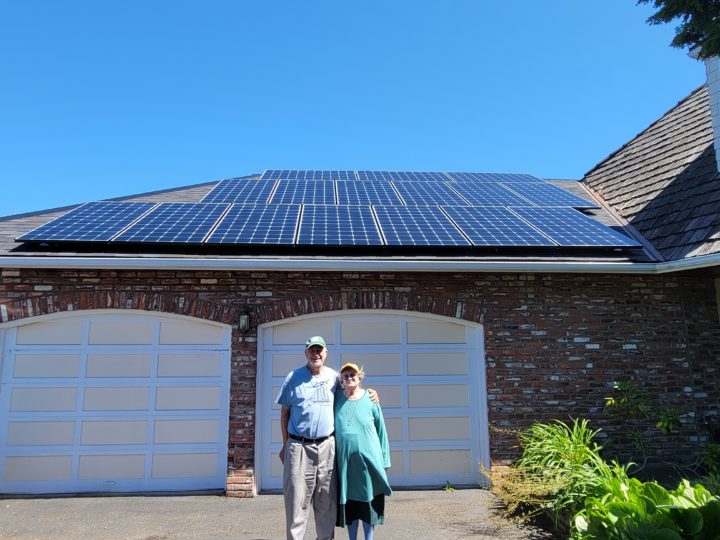
6.5 kw Sunpower array on Clallam PUD Grid, Sequim, May 2021